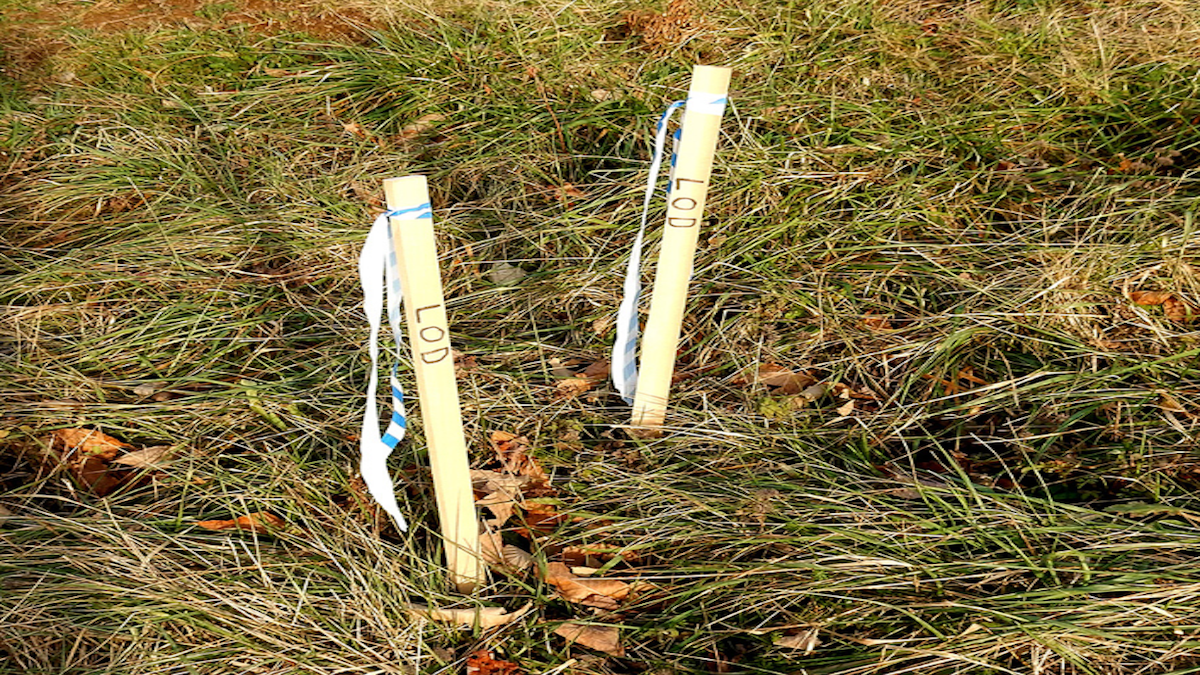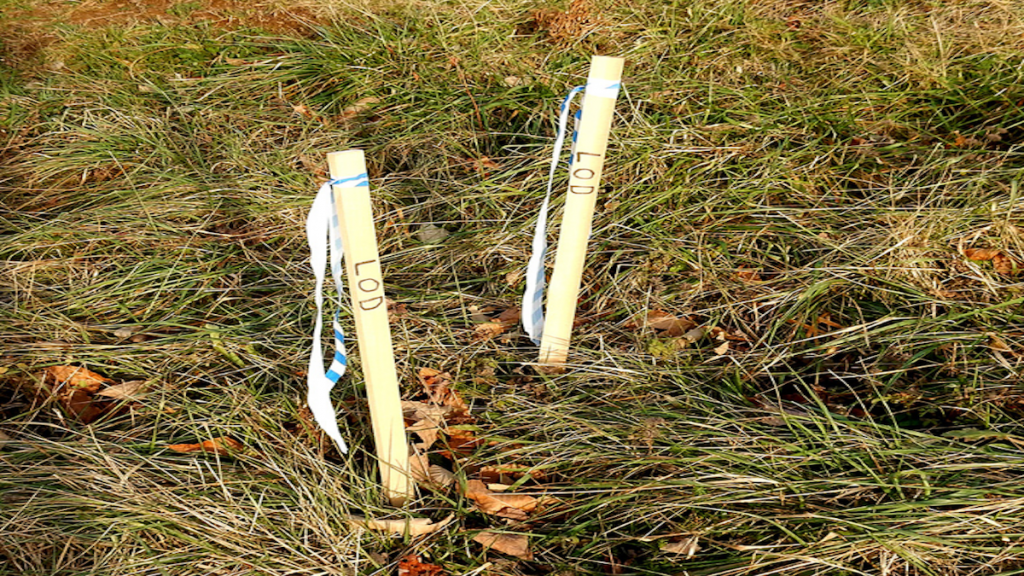Understanding Property Easements: A Homeowner’s Guide to Access and Utility Rights in Utah
Owning property is not as straightforward as many buyers assume. Beyond the obvious boundaries and legal description, there may be hidden rights attached to your land that allow others to use it for a specific purpose. These property easements can influence everything from your landscaping plans to where a utility company can dig. In this guide, we break down what easements are, why they matter to homeowners in Utah, and how a professional land survey reveals them.
What is an easement?
An easement is a legal right that permits someone who does not own a property to use part of it for a limited, designated purpose. Easements typically show up in deeds or recorded agreements and continue even when the land changes hands. Common examples include:
- Utility easements – give utility companies the right to install and maintain lines for water, sewer, gas or electricity across private property.
- Access or right‑of‑way easements – allow another landowner or the public to cross your land to reach a road, trail or other property. A private lane that runs along a property line is often subject to an access easement.
- Drainage easements – grant a municipality or neighbor permission to route stormwater across your land.
- Recreational easements – allow public use of trails, waterfronts or open space on private land.
Unlike fee ownership, an easement does not transfer title; it simply confers the right to use the land in a specified manner. Some easements are created by written agreements, while others arise from long‑time use (known as a prescriptive easement). The Utah County Surveyor notes that licensed land surveyors frequently lay out utility easements and rights‑of‑way for construction projects, highlighting how common these features are in development.
Why homeowners need to understand easements
Easements can affect property value, improvement plans and even legal liability. Here are a few reasons homeowners should learn about them:
1. Restrictions on development. Building a fence, installing a pool or planting trees may not be permitted within an easement corridor. Violating an easement could force you to tear out improvements later.
2. Access obligations. If a neighbor has a right‑of‑way across your property, you cannot unreasonably block their passage. Understanding the exact limits of that right can prevent disputes.
3. Utility maintenance. Utility companies have the right to access their equipment. Knowing where easements run helps you avoid unintentional damage during landscaping projects and ensures they can perform repairs without conflict.
4. Liability concerns. Failing to disclose an easement when selling property can lead to legal claims. Conversely, buyers may negotiate a lower price if a large easement limits future use.
How to discover easements on your property
The easiest way to learn about existing easements is to review your deed and title documents. Standard title reports should list recorded easements, including the parties involved and their purpose. However, homeowners often overlook old easements buried in technical language. That is where a professional land survey becomes invaluable. Land surveys not only establish property boundaries but can identify easements and rights‑of‑way, reveal neighbor encroachments and provide legal descriptions of land. Licensed surveyors have access to public records and can interpret easement descriptions, ensuring they are plotted accurately on a map.
If you prefer to conduct preliminary research yourself, you can:
- Check the county recorder’s office. Most Utah counties allow homeowners to view recorded plats and easement documents online or in person. Search by parcel number or owner name to see if any easements are attached to your property.
- Contact utility providers. Local water, electric and telecom companies can tell you if they hold easements on your parcel.
- Read the subdivision plat. Many platted subdivisions dedicate easements along lot lines for utilities or public access. The plat will show the width and location of these corridors.
Different types of easements
While all easements confer some right of use, their legal characteristics vary:
- Easements appurtenant run with the land. This means the easement’s benefit and burden transfer automatically to future owners. For example, if Parcel A holds an easement allowing access across Parcel B, that right remains in place even when A or B is sold.
- Easements in gross benefit a specific individual or entity rather than a neighboring parcel. Utility easements fall into this category. They are typically not transferable without the owner’s consent.
- Prescriptive easements arise when someone uses another’s land openly and continuously for a statutory period (20 years in Utah) and the property owner doesn’t object. Courts sometimes recognize such use as a legal right, although establishing a prescriptive easement requires evidence and may spark disputes.
Homeowners should also distinguish between an easement and a license. A license grants temporary permission to use land but is revocable at the owner’s discretion. An easement, in contrast, is a property right that endures according to its terms.
What about encroachments?
Easements differ from encroachments. An encroachment occurs when a structure or improvement (such as a fence, driveway or shed) extends over the property line into a neighbor’s land. Even minor encroachments can lead to legal disputes. Our previous article on [why you need a boundary survey before building a fence in Utah] explains how a surveyor locates property corners and helps avoid encroachments. A boundary survey also identifies existing easements so you do not place improvements in restricted areas.
Resolving easement disputes
Disagreements about easement scope or location are common. One party may think an access easement is wider than recorded, or a homeowner might believe a utility company has overstepped its rights. When conflicts arise, consider these steps:
1. Review the recorded documents to confirm the easement’s terms. Look at width, permitted uses and any maintenance responsibilities.
2. Commission a survey to stake the easement boundaries. Surveys provide a definitive map that can prevent continued encroachment or overuse.
3. Negotiate a modification. If both parties agree, you can amend an easement to relocate its path or adjust its width. The modification must be recorded to be enforceable.
4. Consult an attorney if negotiation fails. Utah courts will interpret ambiguous easement language and determine each party’s rights.
How Cook Surveying can help
Cook Surveying has over 30 years of experience providing high‑quality surveying services to homeowners across Utah. Our team in Salt Lake City uses the latest tools to perform boundary surveys, topographic surveys and construction staking, and we work regularly with title companies and attorneys to map easements. When an easement affects your property, we can:
- Research recorded documents and integrate them into our survey to show existing easements on a plat.
- Locate and mark easement corridors in the field so you know exactly where they lie.
- Assist with subdivision and development plans by ensuring utility and access easements are properly placed and recorded.
- Coordinate with engineers and attorneys to draft new easement descriptions when needed.
Related reading and resources
Understanding easements is only one part of protecting your property rights. For a deeper dive into boundary determinations, read our post on [Hydrographic surveys and why homeowners should pay attention]. If you are preparing for a construction project, our article about [why boundary surveys are essential before building a fence] explains how surveys prevent encroachments and identify easements.
For more information about easements, visit these external resources:
- Utah Property Rights Ombudsman – Easement basics
- Realtor.com – What is an easement? Property rights explained
Final thoughts
For more resources, visit the Utah Property Rights Ombudsman easement basics and Realtor.com’s easement guide. Check our posts on hydrographic surveys and boundary surveys before building a fence for related insights.Property easements can be confusing, but they play a critical role in how land is used and developed. By understanding the different types of easements, checking your deed and public records, and consulting a licensed surveyor, you can avoid surprises and protect your investment. Whether you are buying a new home, planning improvements or simply want peace of mind, a professional land survey will help you understand every right and restriction tied to your property.



